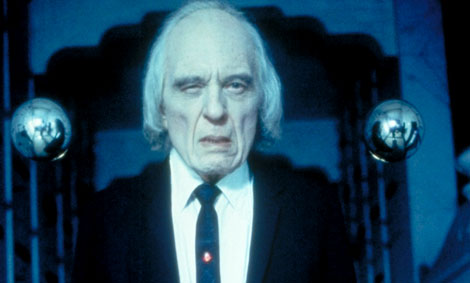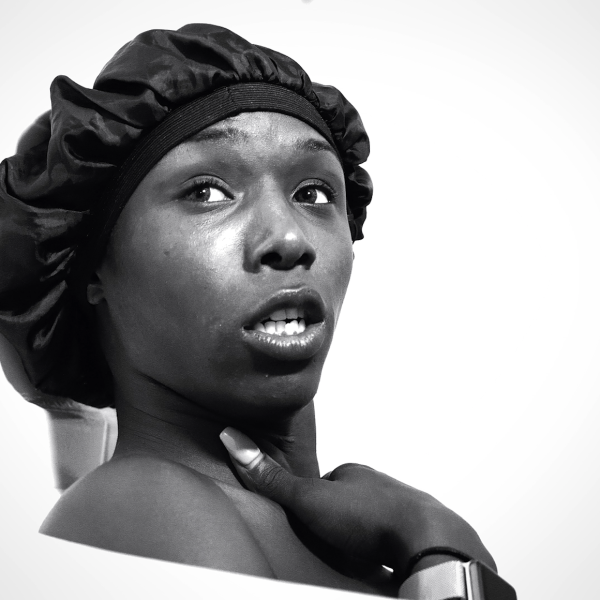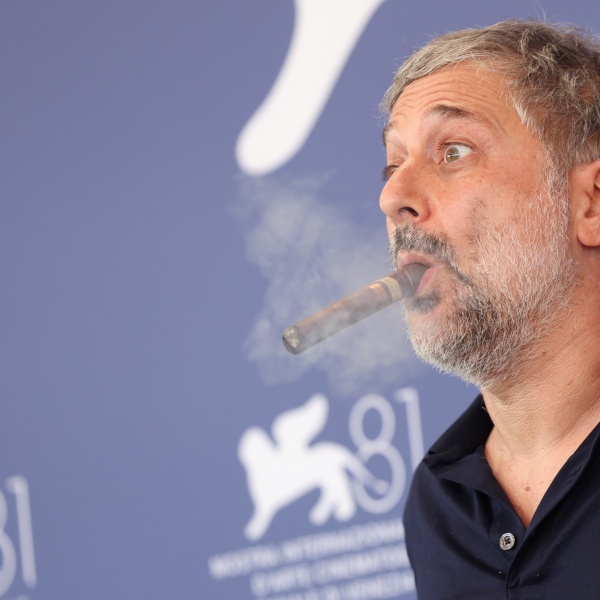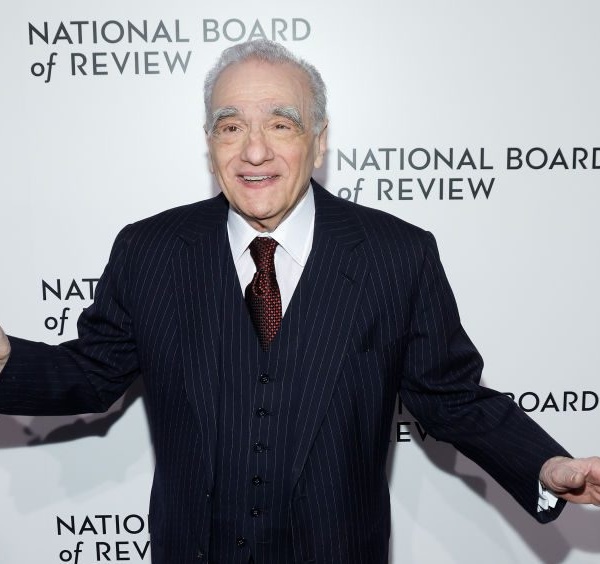In 1979, Don Coscarelli was 23 years old when he made a haunting, off-beat tale of two brothers facing off against an inter-dimensional threat known as The Tall Man, who Angus Scrimm (Coscarelli’s best friend) played with psychopathic intensity. “Phantasm” became a cult phenomenon, spawning four sequels; the purported finale, “Phantasm: Ravager” (Well Go USA), opens this week. But Scrimm’s no longer around to help promote it, and Coscarelli’s left on his own to contemplate a rocky career.
Whether or not it’s truly the last, “Ravager” does mark Scrimm’s final performance. The actor died in January at the age of 89, not long after production wrapped. When “Phantasm: Ravager” premiered at Fantastic Fest in Austin, alongside a new 4k restoration of the original film (aided by JJ Abrams’ production studio, Bad Robot), the screenings had the air of a wake.
“Angus’ passing was both a big professional blow and a very sad personal development for me,” Coscarelli said at Austin’s Alamo Drafthouse shortly before the “Ravager” premiere. “The fans loved Angus, he was like an icon to them.” For Coscarelli, the current moment represents an opportunity to consider how the series came to define his career, and why it was finally time to move on.
A Strange Universe
“Phantasm” defies traditional genre barriers. It’s not horror, fantasy, or science fiction, but a peculiar fusion of all three, driven as much by creepy mood as story. On the surface, the recurring showdowns between the Tall Man and our heroes, baldheaded badass Reggie (Reggie Bannister) and hunky Mike (Michael Baldwin), are ludicrous. Threats in the “Phantasm” universe are flying metallic balls that squirt out the blood of their victims, not to mention corpses shrunken to the size of little people and reanimated as slaves who look like deranged Ewoks.
Nevertheless, the “Phantasm” franchise has maintained a surreal quality that has less to do with the literal threats than what they symbolize — a meditation on the alien nature of death and the ritualistic secrecy associated with it. The Tall Man, who typically takes root in funeral homes (the better to subject recently deceased people to his deranged agenda), embodies a universal fear. Scrimm, his features contorting into a fearsome scowl, provided a face to it all.
The movies revel in strange, spooky, and ridiculous moments, melded by tight-knit characters who battle the mayhem. Equal parts James Whale’s “Frankenstein,” “The Texas Chainsaw Massacre,” and grindhouse absurdity, “Phantasm” trafficks in deep-seated dread.
While the “Phantasm” mythology has grown more complex over the years, Coscarelli remains focused on their metaphorical possibilities and leaves the debates to diehard fans. “As the years go by, I attend more funerals and I see this process of death that we have in America,” he said, noting that the loss of recent friends and family — his mother, Scrimm — clarified the movie’s themes for him.
“It hasn’t changed,” he said. “It’s creepy, weird, and I’m not sure it provides all that much comfort for the bereaved.”
“Phantasm” is hard to categorize, much like Coscarelli’s career. After he completed the movie, the young filmmaker launched on a national tour with Scrimm, a former journalist who had just landed the role of a lifetime. The actor often showed up at screenings in costume.
“Angus and I had such a good time,” Coscarelli said. “He had this ability to charm people who didn’t necessarily like the movie.”
Avoiding Success
But plenty of people did. As Coscarelli faced his newfound popularity, he was determined to avoid cashing in. “I had no interest in making the sequel,” he said, explaining the nine-year gap between “Phantasm” and its followup.
Instead, he went into production on the ill-fated sword-and-sorcery epic “Beastmaster,” clashed with producers over his creative vision, and spent years distancing himself from it. “My wife always says not to criticize it, because people like it,” Coscarelli said. “But it was different from what I had intended to make. I think it could’ve been a much more legitimate movie, not as silly as it turned out.”
For several years, Coscarelli went off the grid, sketching out ideas for projects that never reached fruition while “Phantasm” quietly found a second life in the emerging home video market. “He was as fascinating to me as Terrence Malick, who had similarly vanished for an extended period,” said writer-director Roger Avary, who was a struggling production assistant when he met Coscarelli, long before Avary co-wrote “Pulp Fiction” with Quentin Tarantino. “Coscarelli was an enigma, a magnificent and visionary director who oversaw and controlled all aspects of his productions to Kubrickian proportions. I saw him as a true American auteur.”
Coscarelli got a second chance when Universal, which was fresh off the successful installments of the “Halloween” and “Friday the 13th” franchises, gave him a ring. “When you’re working with a sequel, it’s really a commodity you can sell rather than this unknown thing you can create a market for, so we just jumped right in with the money,” Coscarelli said, adding that the $3 million budget was still a pittance by Hollywood standards.
But it was more than enough to bring the outrageous world of “Phantasm” to a bigger plane. Coscarelli hired the founding members of the influential effects studio KNB EFX, in addition to makeup artist rock stars Greg Nicotero and Robert Kurtzman. When the studio decided to rush “Phantasm II” into theaters in summer 1988 to beat the opening of “Midnight Run,” Coscarelli insisted on an additional $500,000 to complete production. The studio complied — and the movie bombed, grossing just $7.5 million and only finding lasting value in the home entertainment market long after the theatrical release.

Coscarelli still thinks the studio did a poor job of marketing, and blames some of the odd plot twists on the insistence of certain executives that he turn several dream sequences into literal events. A test screening for an early cut showed many viewers had questions about mysterious events in the story. Coscarelli wanted to embrace that. “People were confused,” he recalled. “Hey, it’s a ‘Phantasm’ movie! That should’ve been a good thing. But instead, we had to go back to the edit.”
The Battles Continue
“This is the horrible thing about my career,” Coscarelli said. “For some reason, the successful films of my mine don’t connect with people in power.”
Years later, with two more “Phantasm” sequels behind him, Coscarelli went through a similar challenge with another would-be cult classic: “Bubba Ho-tep,” the 2002 genre-bender in which Bruce Campbell plays a clandestine Elvis Presley hiding out in a retirement home and doing battle with a vengeful mummy. As with “Phantasm,” the movie took a ridiculous premise more seriously than viewers expected, resulting in an idiosyncratic tone piece that put a lyrical spin on its B-movie conceit.

Once again, Coscarelli struggled to find a buyer willing to embrace the weirdness. No distributors showed when Coscarelli previewed the movie at the Toronto International Film Festival, and he eventually took it out himself, much as he did decades earlier with “Phantasm.” Among the buyers he did contact, the response was generally that they “just didn’t get it, or didn’t want to touch,” Coscarelli said. “That was very frustrating.”
He remains sore about the lack of interest. “I’m very, very proud of that movie,” he said. “Bruce provided the performance of his career. If I’m introspective about it, I think that the movies I make connect with audiences even as they fly over studios’ heads.”
He encountered a more elaborate version of that problem a few years later, when he took the “Phantasm” property to New Line in the hopes of pitching a remake. But he quickly detected that the studio wouldn’t give him the chance to lead the project. “You just got the feeling that once I signed on the dotted line, they’d be like, ‘Oh, Don, you had a good idea, but let’s get the good-looking hunk from the CW to star in it and we’ll find some creepy old dude to take over for Angus,’” Coscarelli said. “And he was still alive.”
A New Life for “Phantasm”

Fortunately, Coscarelli still gets traction from his “Phantasm” days. A few years after “Bubba Ho-tep,” he received a call from “Phantasm” super-fan J.J. Abrams, who wanted to screen the film for his Bad Robot staff. At that point, there were no decent copies of the film available, so Abrams decided to rectify that problem. Coscarelli worked with sound engineers and colorists and the result was a much more polished version of the movie than had ever been seen before. He effused about the ability to stabilize certain images, remove the grain, and clarify the audio to create a far more immersive experience. “A lot of filmmakers look at their previous movies and are tortured by their mistakes,” he said. “If you can fix a few of them, you jump at it.”
Abrams’ interest in “Phantasm” also helped Scrimm land a recurring role on “Alias;” later, Abrams named a character in his “Star Wars” sequel “Phasma” as a homage. But the Hollywood heavyweight isn’t the only filmmaker inspired by Coscarelli’s works.
“The charm of ‘Phantasm’ — and the entire ‘Phantasm’ series, for that matter — is its ability to buck the conventions of traditional horror tropes in ways that studios are completely incapable of doing,” said Ted Geoghegan, the writer-director of the low-budget horror efforts “We Are Still Here” and the upcoming “Mohawk.” “Don Coscarelli’s movies are punk rock, and push horror’s envelope in ways modern narratives are totally incapable of. They’re raw, purposely vague, and play by their own rules. They’re the type of films that inspire me to make movies that fall outside the realm of traditional moviemaking, and I love every second of them.“
Coscarelli finds that kind of lingering interest in his work worthy of further scrutiny. At the Fantastic Fest screening, he looked visibly shaken after asking the audience how many people were watching “Phantasm” for the first time, when close to a dozen hands went up. “I wish I could spend more time with the people who haven’t seen it before because I wonder how the movie ages,” he said. “It’s kind of a movie of its time.”
But “Phantasm” ages well precisely because it’s so out of sync with the moment, which only heightens its dreamlike air. Baffled characters wander through hazy cemeteries and chase murky figures through undefined locations, in deep-seated pursuit for unobtainable closure. His movies are driven by a fundamental desire to wrestle control of a chaotic existence. “It might take us years to find the Tall Man, and if we did, we’d probably die,” muses Mike in the “Phantasm II” voiceover. “Maybe. But not without a fight.”
Coscarelli’s still fighting to keep his vision out there. His 2012 feature adaptation of the horror-comedy comic book series “John Dies at the End” found some fans on the genre circuit and a long VOD shelf life. More recently, he’s been working on a genre-based television series with “Rick and Morty” writer Mike McMahan, which they hope to take out to market next year. Coscarelli hasn’t sworn off feature-length filmmaking, though he admitted the odds are stacked against him. “It’s so hard to break through now,” he said. “You really have to come up with something marketable.”
In the meantime, he’s found some solace in completing the “Phantasm” cycle: “Ravager” was produced on the same micro-budget scale as the first film, and while Coscarelli ceded the directing reins to David Hartman, Coscarelli wrote the first draft of the screenplay, which registers as an appropriate send-off. The movie finds Reggie a senile old man, grappling with whether or not the entire four-decade odyssey was the product of his dementia. “Look, everyone’s getting older, myself included,” Coscarelli said. “The cool part about it is that we’re not shying away from that.”
Despite its rough look, “Ravager” has a loopy plot that speaks to the complete lack of compromise, in part because Coscarelli’s held on to the rights. That gave him the authority to determine each chapter and where the story needs to go next. Coscarelli has already begun to explore what it feels like to let go, but he sounded less enthusiastic about the prospects for a remake since New Line shot him down years ago. At the end of our interview, he shared with me the idea for the reboot he pitched to the studio, which included a clever twist bound to please fans of the original and stimulate newcomers into checking out the series as a whole. It’s too smart to spoil here. Interested parties willing to pony up the cash know where to find him.
“I’m just looking for an opportunity to sell out,” Coscarelli said. He laughed, but his tone is always a bit hard to figure out.




